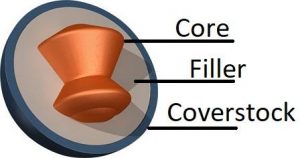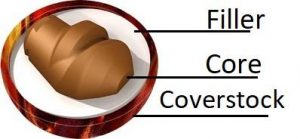Table of Content
You have recently started bowling and have been practicing religiously. You feel that today is the day you roll a strike. You have the right attitude and the right bowling technique. But wait, do you have the right bowling ball?
The right bowling ball will dramatically increase your chances of rolling a high-scoring turn every time. It will enhance your performance and ensure consistency in your play.
So, what is ‘the right bowling ball’?
There is no one universal bowling ball for everyone. Each individual must choose the bowling ball, which is ideal for them. We understand that it is confusing to select the right ball when so many options are available in the market.
Hence, we have prepared a guide to help you choose the right ball for your bowling needs. By the end of this 4 min read, you would know which ball you are going to buy to roll a perfect Turkey!
The first thing you should know is that several factors determine the player and ball fit, these are:
Characteristics of The Ball
A bowling ball can weigh between 6 to 16 pounds. You have to choose a ball that feels just heavy enough for you to make a good throw or roll. Bowling experts suggest two methods to select the perfect fit:
- Gauge according to your body weight: A bowling ball should be 10% of your body weight. This means that if you weigh 140 pounds, then the ball you should choose must weight 14 lbs. Or higher.
- Use the popular combinations: popularly, adult males use 15-16 lbs. Bowling balls, adult women use 13-14 lbs — bowling balls. Adult men with smaller hands may also choose 13-14 lbs — bowling balls. Teenagers and children use lower weight balls.
It is a common belief that heavier balls are better for bowling because they provide a good hook and curve. However, it is not necessary that heavier balls are better. You must consider your own comfort when choosing the weight of the ball.
We recommend you to try balls of different weights and see what works for you. If you are an adult male, try balls between 13-16 lbs. to find an ideal fit for your body. Similarly, if you are an adult female, try bowling balls between 12-15 pounds. to find the perfect fit.
How to Test it:
Take a ball in your hand and swing it back and forth without letting go of the ball. The ideal ball should be light enough that you can swing it freely but heavy enough that it increases the momentum of your swing when it comes forward.
Polymer/Plastic
Urethane
Reactive Resin
Particle
Each material has its own advantages and disadvantages. A player should consider the characteristics of each material and what it can do for their game.
Here are our recommendations:
| Coverstock Material | Advantages | Disadvantages | Ideal for | |
| Player level | Player Style | |||
| Polymer/Plastic | Smooth & shiny surface. Great control | Minimal hook | Beginners and Shooting spares. |
Players who prefer speed over hook can use these too. |
| Urethane | Great transition ball. Higher hook potential | Doesn’t cut through oil as well as reactive and proactive balls | Intermediates looking to upgrade from plastic |
For players who are looking for a perfect balance between speed and hook |
| Reactive Resin | Wild pin action. Just the perfect amount of hook with greater hitting power |
Less control. A slight error can ruin the roll | Professionals and advanced level players | For players who prefer hook and grip over speed |
| Particle (Proactive) | Amazing grip and hook. | Less control. A slight error can ruin the roll | Advanced level professional players. | For experts who have built up good ball speed and now want to master their hook. |
A bowling ball has three holes; one for the thumb and two for the middle and ring fingers. When you choose your ball, consider these two things:
- The holes should not be too loose or too tight. You should be able to slide your fingers in them easily. If the holes of the ball are too loose, you may lose your grip and drop the ball. On the other hand, they may get stuck if they too tight.
- Distance between the thumb hole and the finger holes should be comfortable for you. Ideally, when you place your thumb in the thumb hole, you should be able to stretch your fingers to the finger holes easily. If the holes are too far away, you won’t be able to grip the ball properly.
If you have bought a ball and want to have it drilled for holes, then you should keep the following in mind.
- Measure the distance from the base of your thumb (point a) to the middle of the first bend in the knuckle of your middle finger (point b). As shown in the picture below.
- Note down the length and then compare it to the sizing chart given below.
If your measurement does not precisely match the values in the sizing chart, then chose the closest values. Always prefer the smallest value closest to your measurement
The core or weight block of a bowling ball is the structure inside the ball, which gives it the weight. The Coverstock is the outer layer of the ball, whereas the core, as the name implies, is a central part that makes up the ball.
The core of a bowling ball varies in shape and style; this difference has an impact on the hook, grip, and speed of the ball. You should choose a core that matches your playing style; i-e., speed, or hook.
The most common types of Bowling ball cores are:
| Core Type | Picture | Ideal for |
| Pancake core |  |
● Found in most plastic balls.
● Ideal for straight throws ● Beginners |
| Symmetrical Core |  |
● It is ideal for speed and hook.
● Intermediate players will find it useful |
| Asymmetrical Core |  |
● Creates angular motion
● Gives more control over the ball ● Intermediates and professionals prefer this core |
Characteristics of The Ball
Apart from the structure of the ball, the preferences and playing style of the player is also essential when choosing a ball. You must consider the following factors:
Are you right-handed or left-handed? Right-handed players don’t have trouble finding their bowling balls because most balls are made for right-handed people. On the other hand, left-handed individuals need bowling balls, which are specially made for them because the ring finger is drilled 1/8 inch (3.175 mm) further from the thumb hole on a left-handed ball.
If you are a beginner, this difference won’t matter to you. However, if you are serious about the game, it is better to choose a ball that you can grip comfortably.
If you are just starting to bowl, then a plastic or urethane ball may be ideal for you because it gives the player more control over the throw. Since you are a beginner, you have not polished your technique yet, and a straight throw is your best bet.
Thus, balls with pancake cores and plastic Coverstock are ideal for beginners.
Bowling players have two dominant styles; some prefer speed, whereas others prefer to make angular, strategic rolls. What is your style? While most beginners favor speed over technique, it is not unusual if you would like to practice some angles from the beginning.
If speed is your style, then lighter, plastic, and pancake cores a good option. However, if you are looking for angular motion and hook potential, then try heavier balls with urethane Coverstock and symmetrical cores.
Characteristics of the Environment
Lastly, you should choose your bowling ball according to the bowling lane conditions. Traditionally, bowling lanes were oiled to protect them from damage. Contemporary bowling lanes are synthetic, yet the practice of oiling is still prevalent. Apart from protecting the lanes from damage, the oil serves to make the game more challenging.
You can compare the lane conditions to that of pitch conditions in cricket or course conditions in golf.
Bowling lanes range from dry to highly oiled surfaces. There are many different ‘oil patterns’ which are used to dress bowling lanes. The most common are:
The bowling ball will spin out of control in a heavily oiled lane, whereas it will be slow in a spare or dry lane. Most house lanes (lanes of a bowling alley) are medium-dry to medium. Moreover, their oil pattern is made to help recreational players (helps beginners). The lanes are dry on the outside and lightly oiled in the middle.
Therefore, even if you make a bad throw, the ball will not skid on the outer edge and will go towards the pins when it touches the oiled middle part.
Heavier balls with a higher hook potential are ideal for heavily oiled lanes. Faster and lighter balls are ideal for dry lanes. That is why most bowling alleys have plastic bowling balls.
RELATED ARTICLE: HOW MUCH DOES A BOWLING BALL COST?
Conclusion
In this guide, I have explained that a beginner should consider the characteristics of the ball, players, and the environment before choosing a bowling ball. It is important that you understand which ball will be ideal for your needs. A ball must fit your hand perfectly, it must weigh that you can swing it with momentum, and it must compliment your style of playing.
Secondly, beginners have just learned to bowl. They have the best chance of scoring high when they make a straight roll on a medium-dry lane. A plastic ball that is fast is the most suitable for their needs.
Therefore, we conclude that beginners should use plastic Coverstock bowling balls. Intermediate players can upgrade to urethane balls. If you are serious about playing bowling and wish to improve your play, then we will suggest that you buy your own ball rather than use the ones in the alley.








